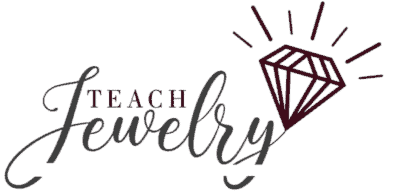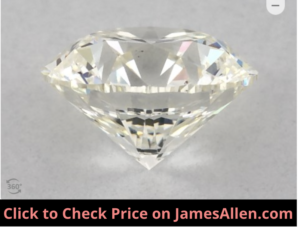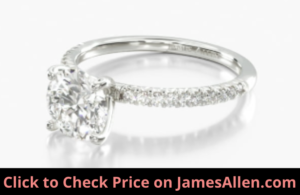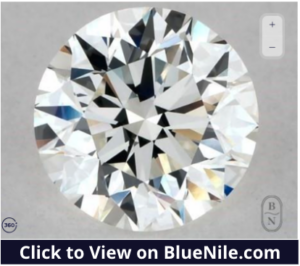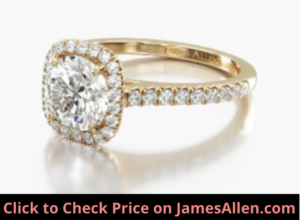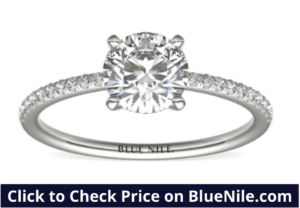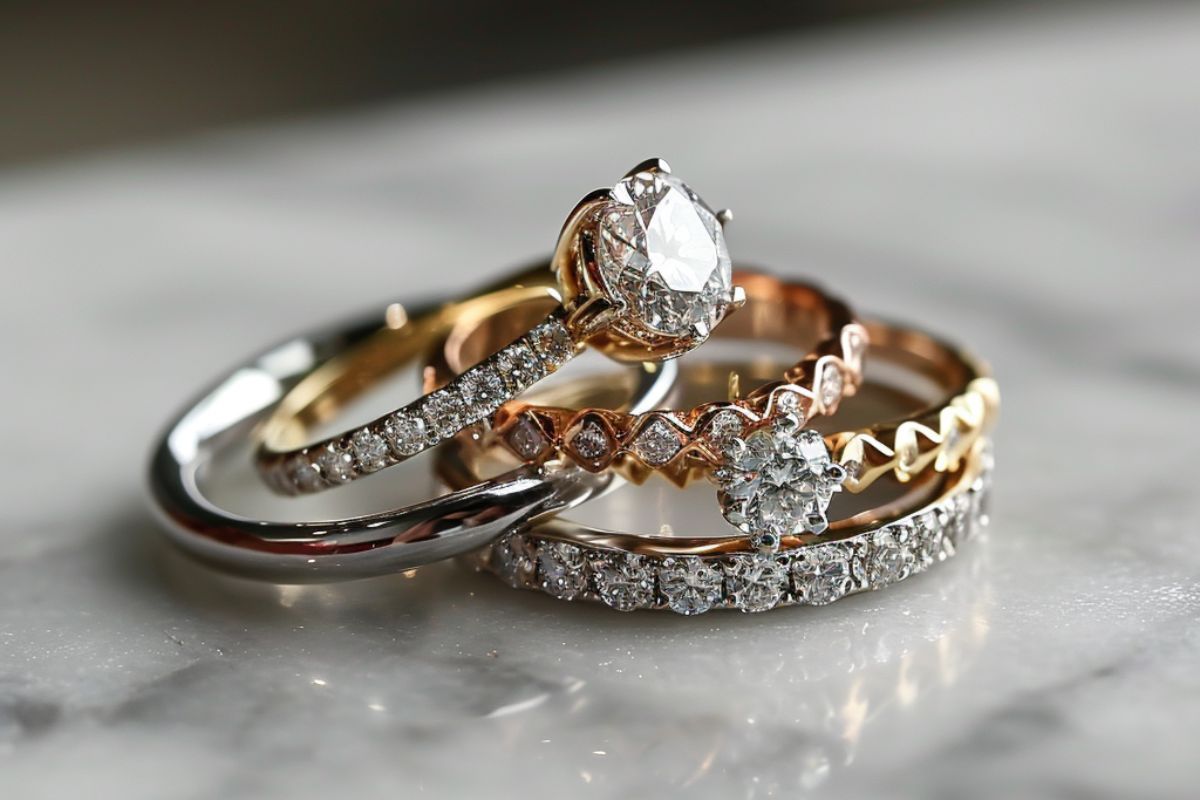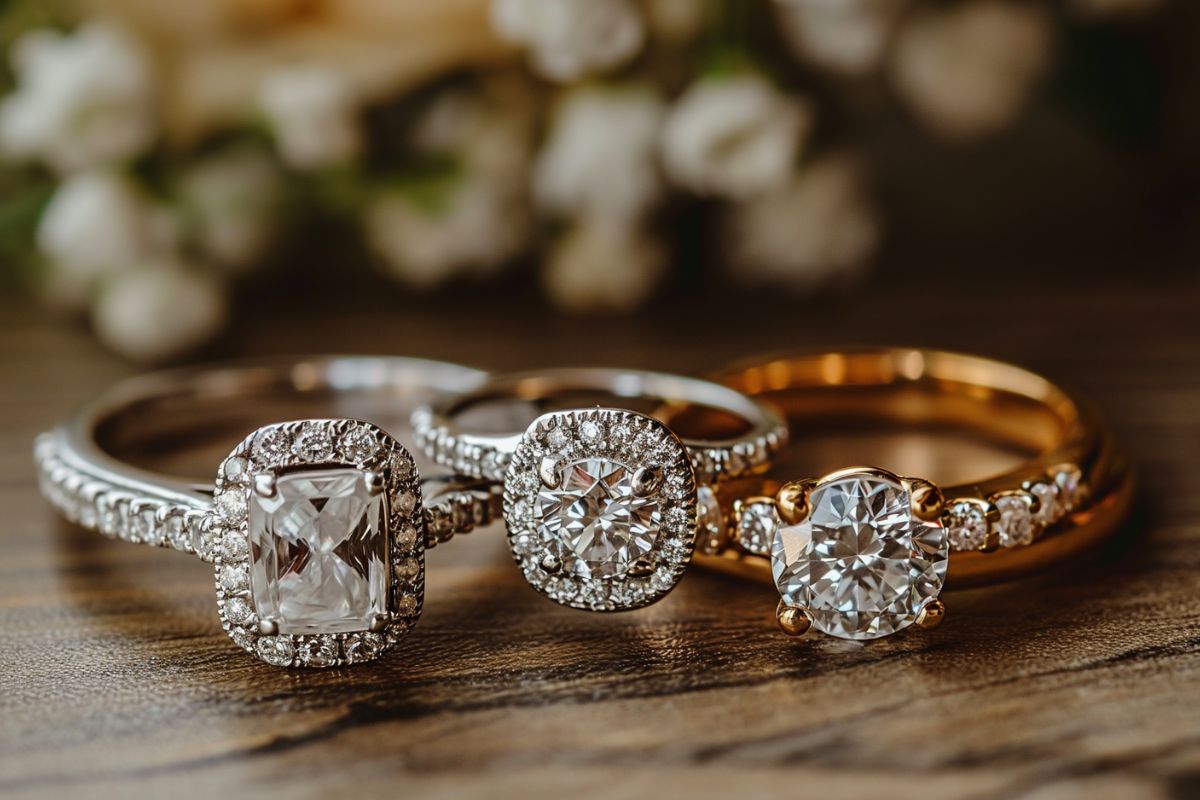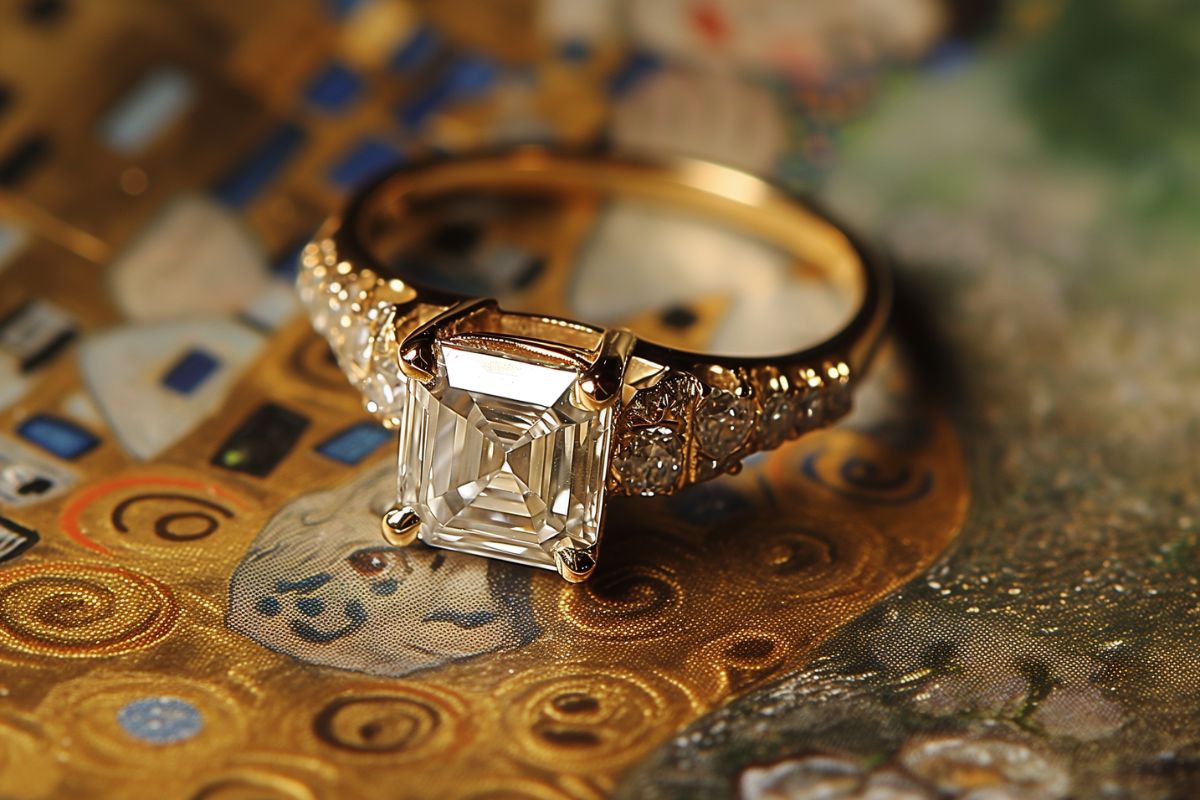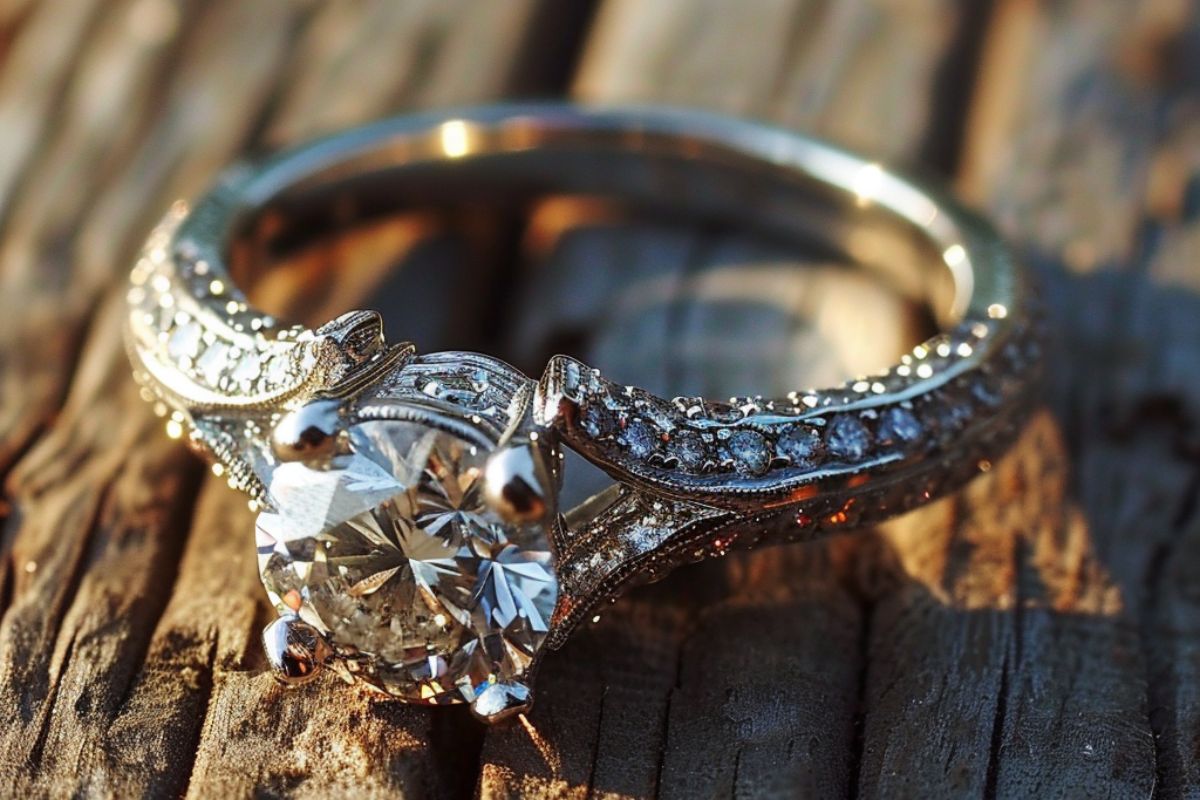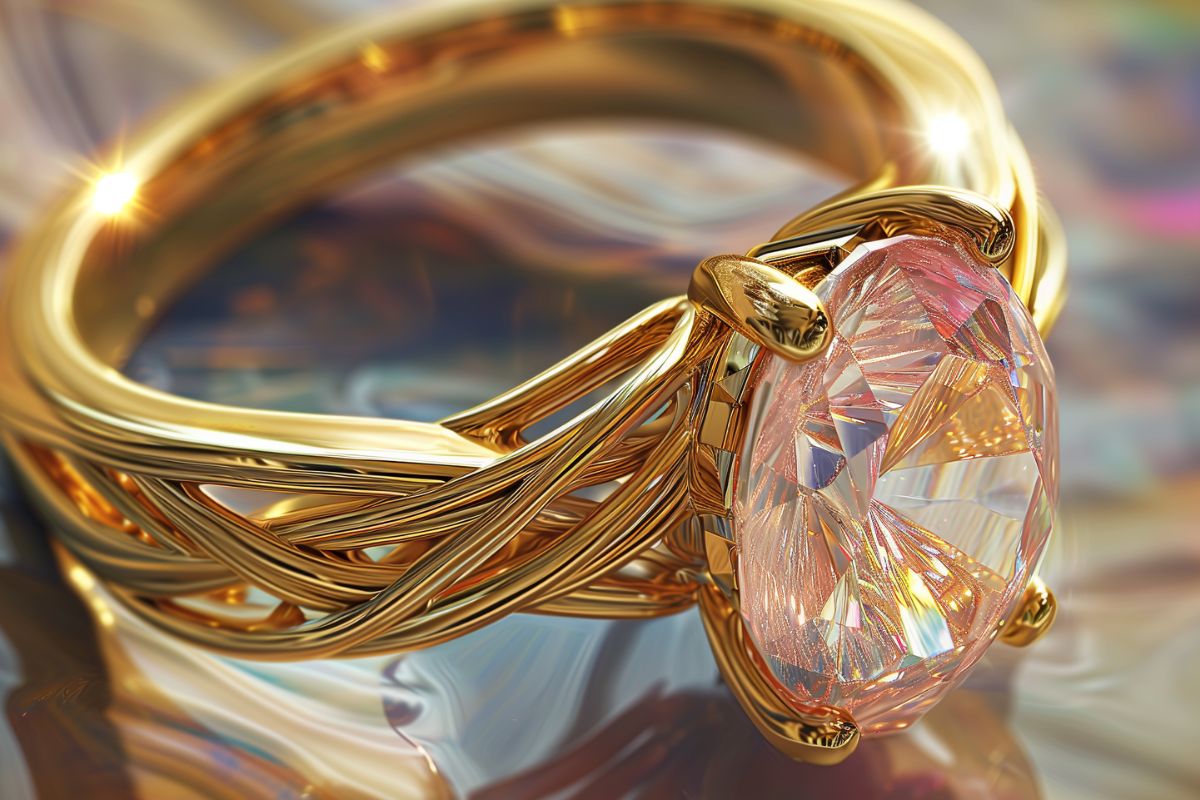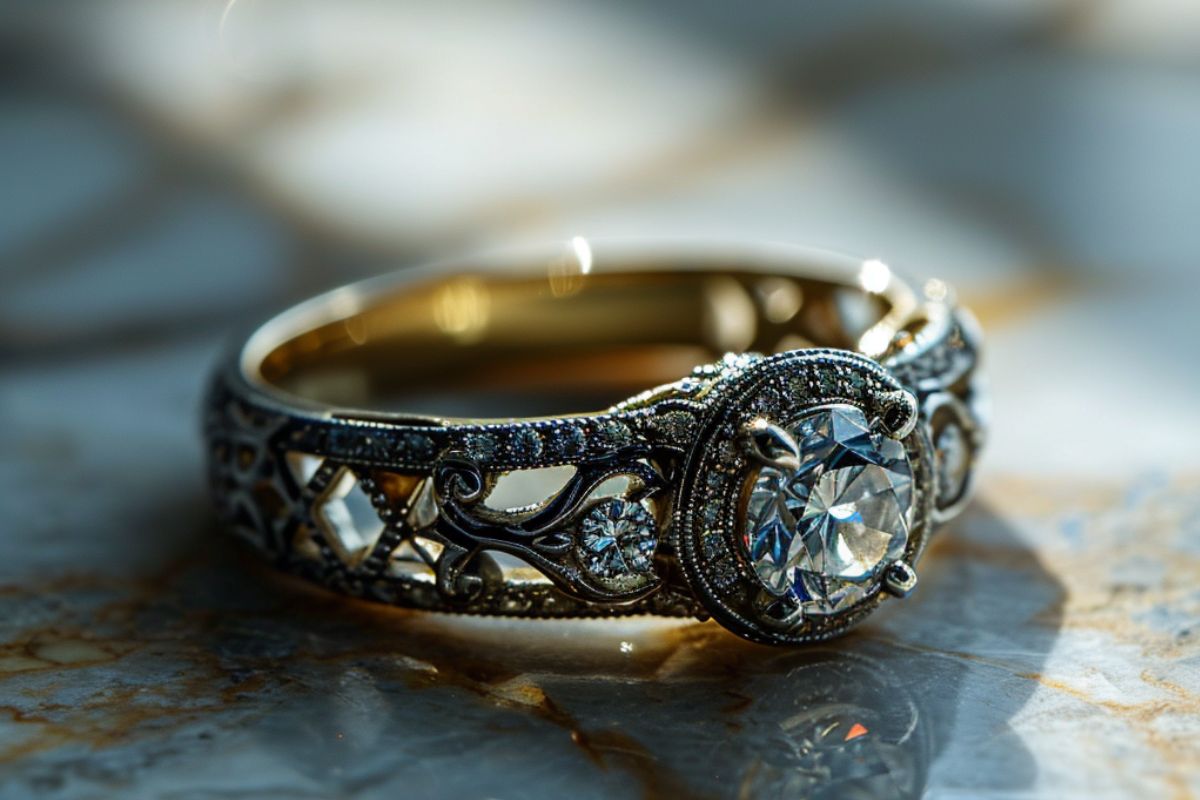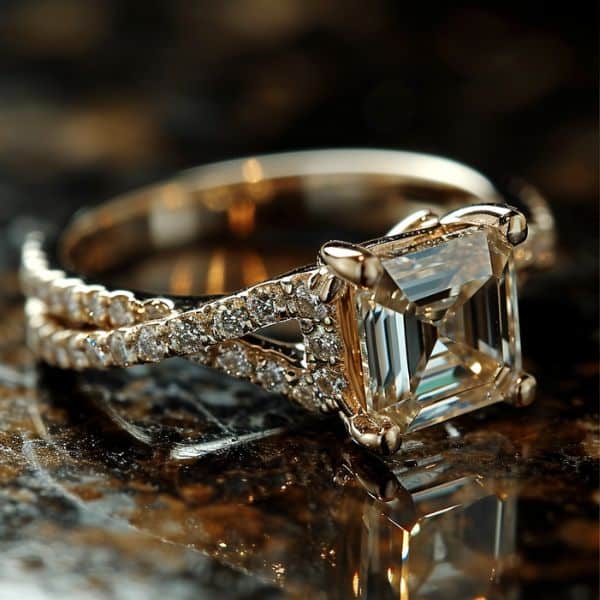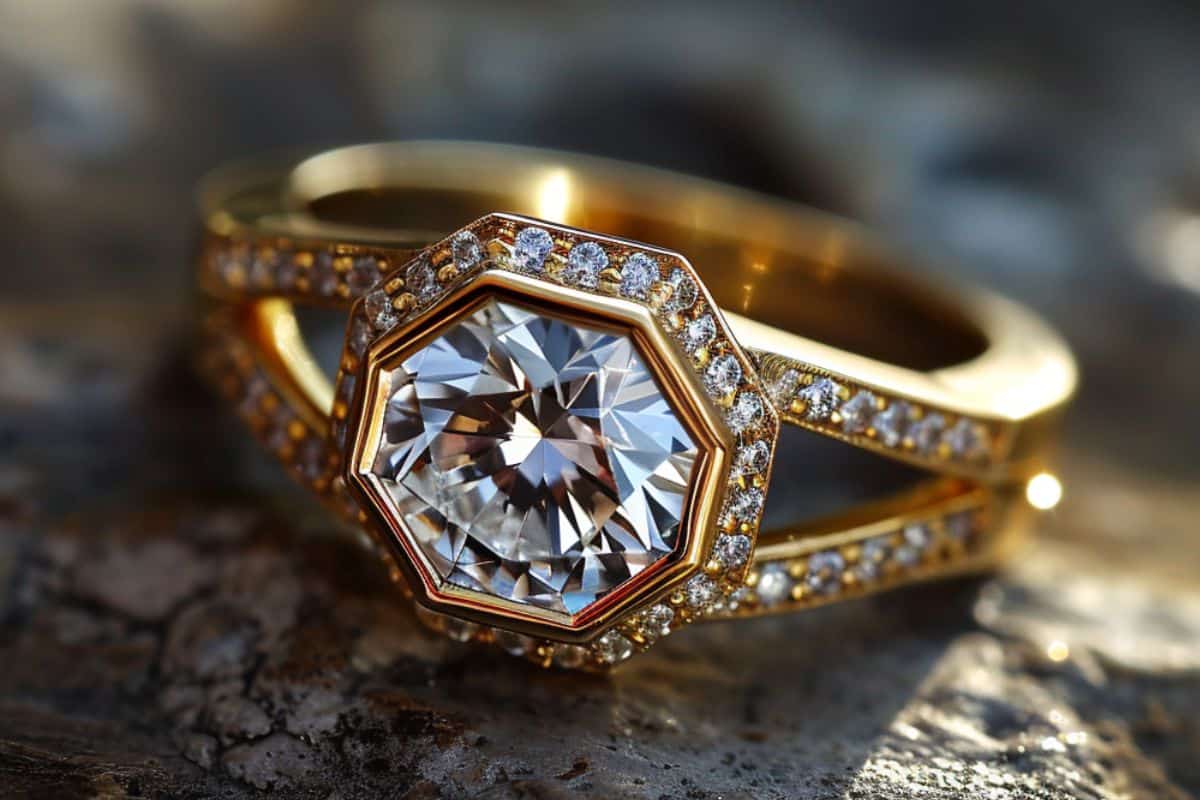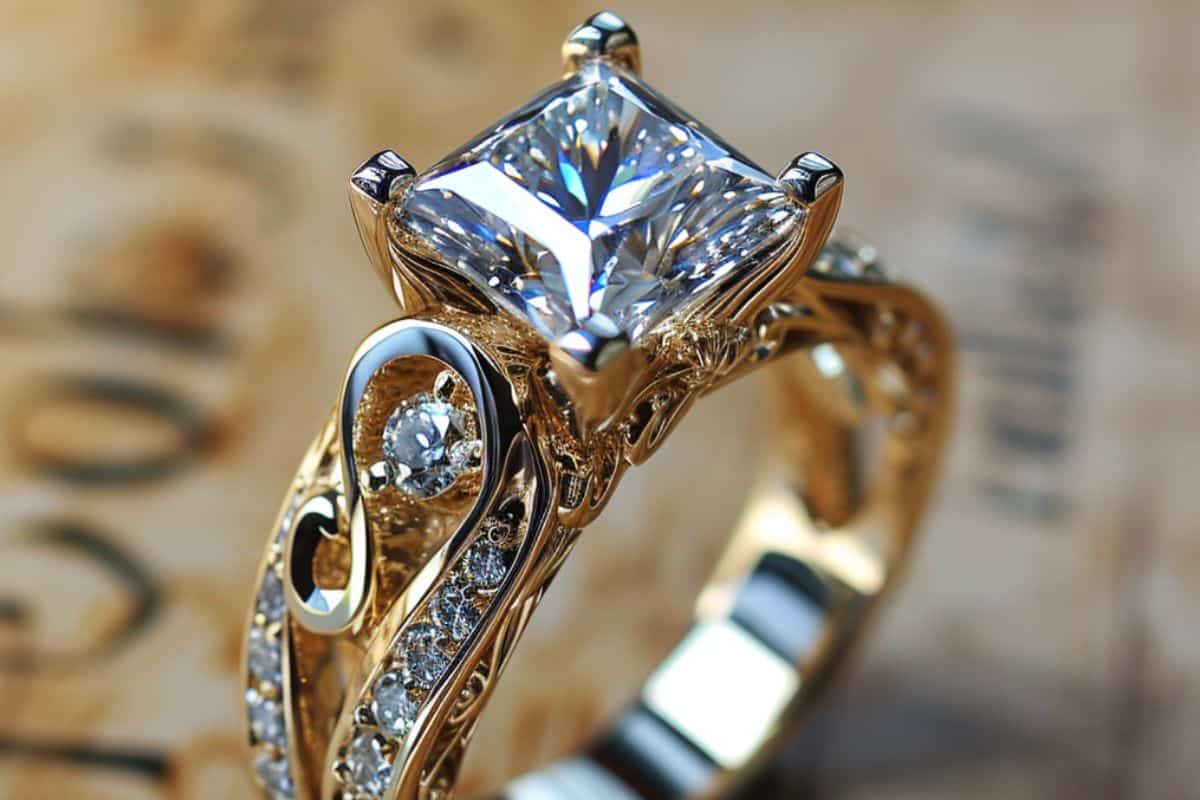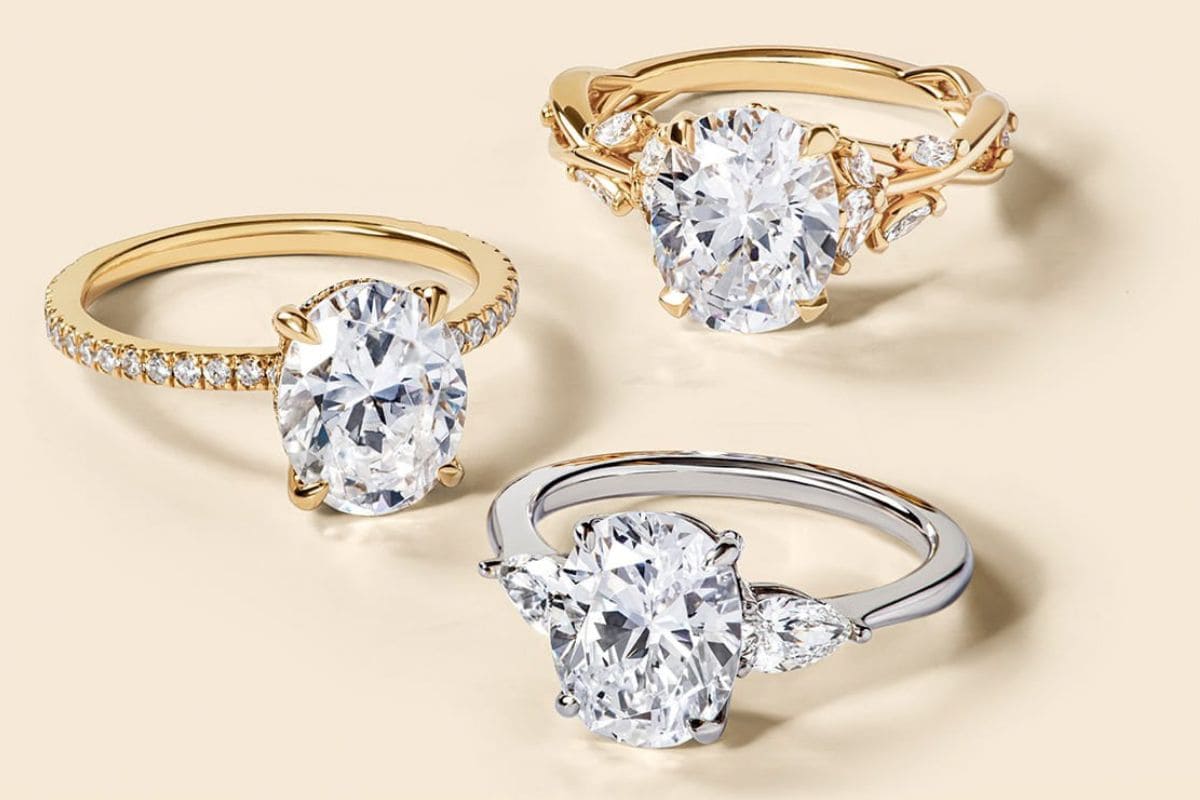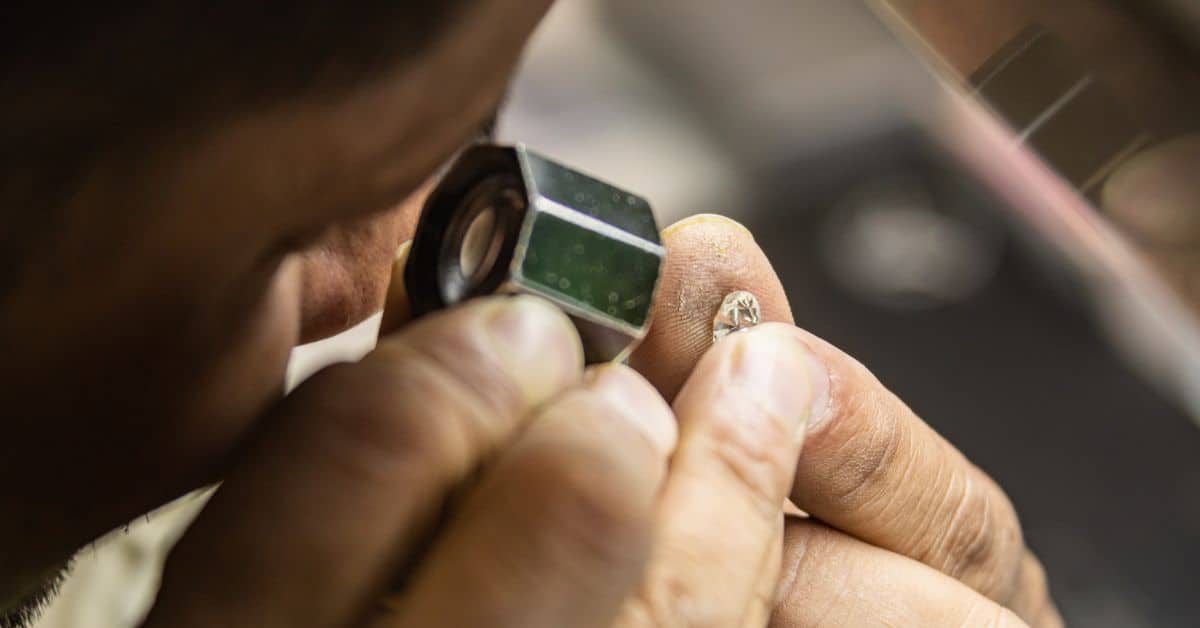- By Jacob Clarke
- jacob.clarke@teachjewelry.com
- Last Updated: November 21, 2023
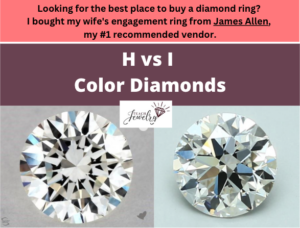
Diamonds earn color grades according to the presence of yellow or brown tints visible within their facets.
The Gemological Institute of America (GIA) developed a scale ranging from D to Z, where D represents colorless diamonds, and Z indicates strong shades of yellow.
Two grades positioned within the near colorless category are H and I.
The main difference between H and I color diamonds is H diamonds show slightly less yellow. They often appear colorless when viewed in a normal setting, so they’re popular choices for engagement rings. I color diamonds show yellow in some fancy shapes and sell for lower prices.
Let’s evaluate H versus I color diamonds, including an overview of each, four distinctions, and how to decide between them.
What is an H Color Diamond?
An H color grade is the fifth highest a diamond can receive on the GIA color scale. That may sound far down the list, but there are 23 grades in total.
As a near colorless diamond, it’s located below G and above I.
Gemologists determine the color grade by examining it with magnification when placed in perfect lighting conditions. They’ll also compare it to a “master stone,” which represents an ideal version of each color.
To see an actual example, view this H color diamond from James Allen, the vendor where I bought my wife’s engagement ring.
Rotate the image to learn how it appears at every angle. You likely won’t spot any obvious yellow.
If you didn’t know its color grade, you would think it earned a D.
That’s because to the naked eye, it’s often difficult to notice the differences between colorless diamonds and ones toward the top of the near colorless category.
But the contrast is more noticeable when they’re placed next to each other.
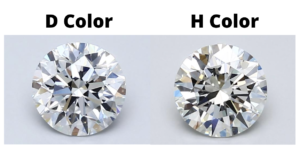
Although the H diamond would likely appear colorless without magnification, its yellow is apparent beside a truly colorless diamond.
What is an I Color Diamond?
I color diamonds are positioned above J and below H on the GIA color scale. It’s the sixth highest grade and ranks third in the near colorless category.

While the tints of yellow sometimes aren’t obvious to the naked eye, they’re more easy to pinpoint for a gemologist who’s examining it with a jewelers loupe under strong lighting.
This I color diamond can be rotated 360 degrees, so you can view it in high-resolution at every angle.
If you view an I diamond in isolation, you could mistake it for colorless.
But similar to H color grades, the difference is apparent when placed next to a D diamond.
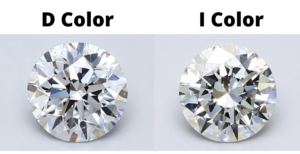
Notice how even though its entire table isn’t covered in yellow, there are areas where it’s clearly visible. On the other hand, the table of the D diamond is clean.
The yellow in an I diamond is also more noticeable when it’s viewed from the side.
Check out the I color diamond below.
The yellow is hidden in the face-up view, but when I rotated the image, it’s apparent.
Compare it directly to a colorless diamond, and you’ll understand why there’s a gap between I color diamonds and ones with the highest grades.
What are the Differences Between H and I Diamonds?
1. H Color Diamonds Have Less Visible Yellow
H diamonds have less visible yellow compared to I diamonds, which is why they earned the higher grade.
Often, the marginal differences between color grades next to each other on the scale are minimal.
It’s when they’re viewed together that you can identify the variance, but even then it’s not always apparent.
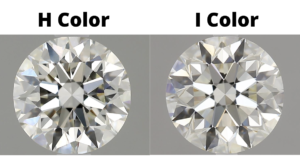
Notice how in the image above, there’s color visible in each. But there’s slightly more yellow present in the I color diamond.
It’s strongest toward the center of the table, and its edges appear colorless, just the like H diamond.
These small differences are the same you’ll find each step down the scale, from F to G color diamonds and I to J.
The lack of yellow visible to the naked eye in H diamonds makes them a more popular choice for engagement rings compared to I.
As I recommend, most buyers don’t prioritize a particular color grade.
Instead, it’s about finding a diamond that appears colorless to the naked eye and avoiding the premiums charged for higher grades.
For example, here’s an engagement ring with H diamond.
Placed in a 14k white gold setting with pavé, you can expect the piece to sparkle from every angle. Although yellow is visible at 10x magnification, it’s likely invisible without it.
The H color diamond gives the illusion it’s colorless without you having to pay for that grade.
2. I Diamonds Aren’t as Popular for Fancy Shapes
Fancy shaped diamonds are any cut that isn’t round brilliant. Examples include:
- Princess
- Marquise
- Oval
- Emerald
- Asscher
Each has its pros and cons, and the way its facets are cut affects its appearance and light performance.
For example, the brilliant-cut facets on princess and marquise cuts cause their light return to rival round cuts.
Step-cut facets, which are elongated and arranged as parallel lines, result in a warm glow. That’s why you’ll often find emerald cuts paired with accents in the form of a halo or pave.
In general, fancy shapes don’t hide color as well as round cuts. This means I color diamonds aren’t as popular of a choice for fancy shapes because they may not appear colorless.
As a comparison, check out this round-cut diamond with an I color grade.
Now view this pear-cut with the same grades.
Even though the color grade is identical, the yellow tints are more visible in the fancy shape.
But if we change the color grade of the pear-cut to an H, we end up with a diamond that’s more likely to appear eye-clean.
There’s exceptions to these rules, but while you can consider I colors for fancy shapes like princess and marquise cuts, start your search for cushion, Asscher, or pear cuts at H color grades to increase the chances they’re clear.
3. H Diamonds Sell for Higher Prices
When all else is equal, buyers are willing to pay a premium for diamonds that earn higher grades across the four Cs of color, cut, carat, and clarity.
Even one position up the scale has the potential to change the cost by hundreds of dollars. As a general rule, you can expect a 10-20 percent change in price for each step up or down the color scale.
When you move from one category to another, like near colorless and colorless, it’s often on the higher end of that spectrum.
In the case of H versus I diamonds, I compiled prices for 230 loose diamonds from James Allen that had the following traits:
- Carat: 0.90
- Cut: Excellent
- Clarity: VVS2

Ones that earned an H color grade had an average price of $5,648, with a range from $5,290 to $6,310.
The I color diamonds averaged $5,005. The range was $4,570 to $5,630.
That represents a 13 percent increase in price, a total of $643, for an H diamond compared to one with an I color.
In many cases, you can’t tell the difference between the two. So that savings could be put toward a heavier diamond, improved cut or clarity, or a quality setting.
If you decide an H color diamond is right for you, there are opportunities to save in the above areas as well.
By choosing a smaller diamond, one with a lower clarity grade that’s still eye-clean, or a more simple setting, you’ll reduce the overall price of the piece.
The area I don’t recommend sacrificing is its cut.
For H and I color diamonds, stick with excellent grades so it’ll maximize brilliance.

I chose an excellent cut for my wife’s engagement ring diamond, and it was worth every penny because of the way it radiates white light when it’s twirled.
4. I Diamonds May Contrast with Accents in Settings
Don’t dismiss the impact of a setting on the overall performance of a diamond ring.
While solitaires are the classic design, others such as pavé and halo settings feature additional diamonds.
To illustrate, the engagement ring below includes both and causes the whole piece to sparkle.
When used correctly, these accents improve light performance for the piece without the same price increase that would result from a larger center diamond.
In fact, a small increase in the diamond’s carat weight can often cost more than the entire setting.
But some I diamonds contrast with the gems on the setting.
For example, if the tiny diamonds have E or F color grades, they may cause the I diamond to appear yellow in comparison.
You wouldn’t want the accents diluting the quality of the main diamond.
Instead, you could choose a setting that also features I diamonds, like the one below.
The pavé diamonds are small enough to appear colorless, so they won’t contrast with the I color diamond in the middle.
This often isn’t a problem with H diamonds. Even if the surrounding stones have a higher color grade, the main diamond can appear colorless.
How to Decide Between H and I Color Diamonds
Deciding between an H versus I color diamond involves understanding how the slight difference affects its performance in a piece of jewelry.
Here are some tips.
Consider an H color diamond if:
- The diamond is a fancy shape that doesn’t hide color as well as a round cut
- You’re looking to avoid the premiums charged for D, E, and F diamonds
- You’ve viewed it in-person or through high-resolution images online and are confident it’s colorless to the naked eye
- The diamond weighs more than two carats
Explore I color diamonds if:
- It’s a round-cut diamond under two carats
- The accents on its setting didn’t earn colorless grades
- You want to put the cost savings toward a higher cut or clarity grade
- The diamond weight less than 0.5 carats
Pair H and I diamonds with a variety of settings to learn the right combination.
By assessing its grading report and viewing how it appears in the piece, you’ll find the diamond ring that’s right for you.
Question & Answer Section
Q1: How is the color grading of diamonds conducted by the Gemological Institute of America (GIA)?
A1: The color grading of diamonds by the GIA involves evaluating the absence of color in a diamond under controlled lighting and precise viewing conditions. The grading scale ranges from D (colorless) to Z (light color).
Q2: What factors contribute to the appearance of color in H and I color diamonds?
A2: The appearance of color in H and I color diamonds is influenced by several factors including the diamond’s size, shape, cut quality, and the color of the setting in which the diamond is mounted.
Q3: What is the significance of the near colorless category in the GIA color scale?
A3: The near colorless category, which includes H and I color diamonds, provides a balance of color and cost, offering good value for those seeking a nearly colorless diamond without a hefty price tag.
Q4: How do the prices of H and I color diamonds compare and what factors contribute to the price difference?
A4: H color diamonds are generally priced higher than I color diamonds due to their closer proximity to the colorless category. The price difference also reflects the general preference for less color in diamonds.
Q5: In what settings or designs might the color differences between H and I diamonds be more noticeable?
A5: The color differences between H and I diamonds may be more noticeable in white metal settings like platinum and white gold, and less noticeable in yellow or rose gold settings.
Q6: How does the choice of diamond shapes affect the perception of color in H and I color diamonds?
A6: Certain shapes like round brilliant cuts may mask color better, while others like emerald or asscher cuts may expose color more. The choice of shape can significantly affect the perception of color in H and I diamonds.
Q7: What are the considerations a buyer should make when deciding between an H and I color diamond for engagement rings?
A7: Buyers should consider their budget, the setting and design of the ring, the size and shape of the diamond, and personal preference regarding color when deciding between an H and I color diamond.
Q8: How do the color differences between H and I diamonds impact their overall aesthetic appeal, especially when set in different types of metal?
A8: The aesthetic appeal may vary with personal preference. Some may prefer the warmer tone of I color diamonds especially in yellow or rose gold settings, while others may prefer the cooler tone of H color diamonds in white metal settings.
Q9: Are there any notable differences in the market demand for H and I color diamonds, and what might be driving these differences?
A9: Market demand may vary regionally and culturally. Some markets may have a stronger preference for higher color grades, while others may prioritize other factors like carat weight or clarity over color.
Q10: How does magnification and lighting affect the perception of color in H and I color diamonds, and are there other tools or methods used to assess color in diamonds?
A10: Magnification and lighting can significantly affect color perception. Controlled lighting conditions and professional grading tools are used by gemologists to accurately assess the color of diamonds.

Jacob Clarke
Jacob Clarke is the founder of TeachJewelry.com.
He earned an Applied Jewelry Professional Diploma from the Gemological Institute of America (GIA) and now brings you essential information about diamonds, settings, and more.
Jacob has consulted with leading jewelry brands, and his work has been cited in Clean Origin, Diamond Nexus and industry publications.
He's also a member of the International Gem Society.
He enjoys discussing jewelry with readers, so contact him with any questions at jacob.clarke@teachjewelry.com.
